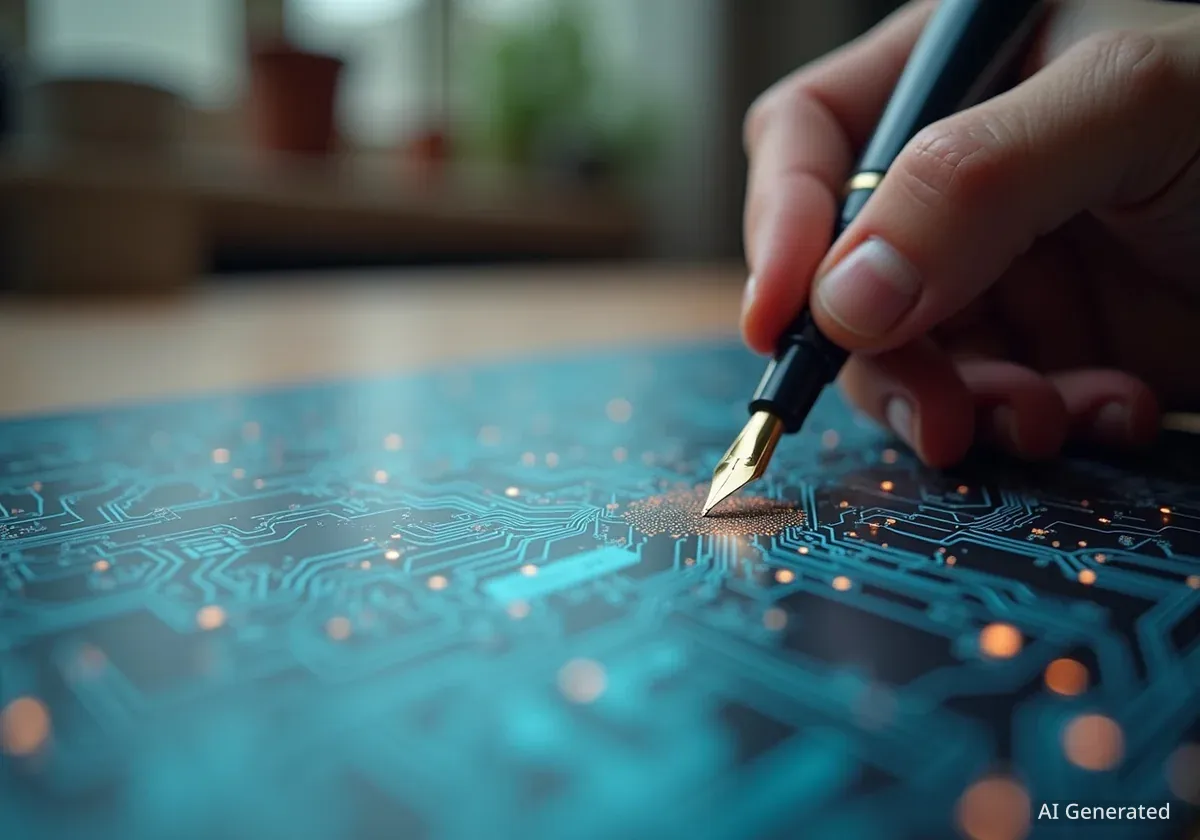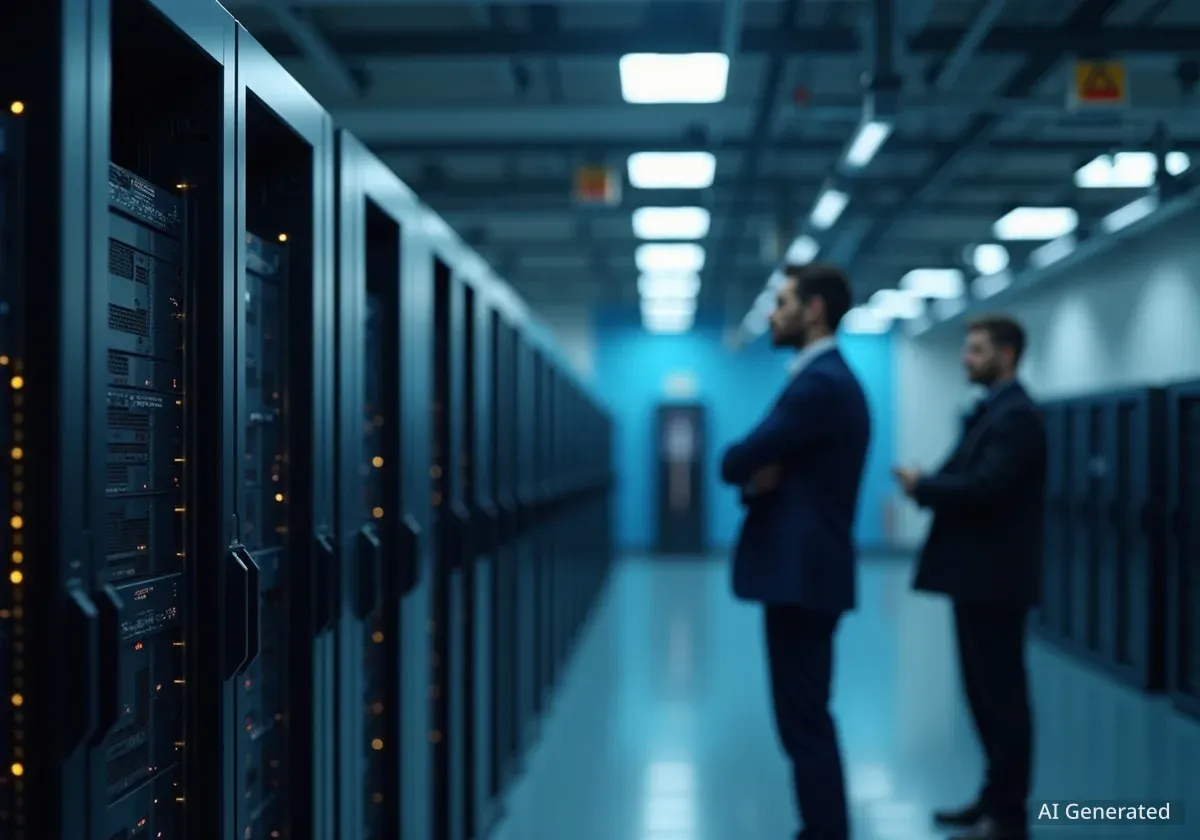Artificial intelligence is advancing at different speeds across various tasks. While AI tools for coding and technical problem-solving are making significant leaps forward, applications like email writing or general chatbots show more modest progress. This uneven development is largely due to a key training method called reinforcement learning, creating what experts are calling a "reinforcement gap."
Key Takeaways
- Artificial intelligence capabilities are not improving uniformly; some skills advance much faster than others.
- The primary reason for this disparity is a training technique known as Reinforcement Learning (RL).
- RL is most effective for tasks that have clear, measurable, and automated pass-fail criteria, such as software coding.
- This creates a "reinforcement gap" between easily testable skills and subjective tasks like creative writing.
- This gap has significant implications for which industries and job functions are most likely to be automated in the near future.
An Uneven Landscape of AI Progress
Recent advancements in AI models like GPT-5, Gemini 2.5, and Sonnet 4.5 have introduced powerful new capabilities, particularly in the field of software development. These tools can now automate complex coding tasks that were previously manual.
However, this rapid progress is not seen everywhere. For many common AI applications, such as generating emails or holding conversations, the user experience has not changed dramatically over the past year. Even as the underlying AI models become more powerful, the practical benefits for certain products remain limited.
This difference in progress highlights a critical factor in AI development: not all skills are equally easy to improve. The divergence is becoming a defining feature of the current AI landscape, separating tasks that can be systematically evaluated from those that cannot.
The Role of Reinforcement Learning
The core driver behind this trend is Reinforcement Learning (RL), a powerful method for training AI systems. RL has been a major contributor to AI progress over the last several months and continues to grow in sophistication.
What is Reinforcement Learning?
Reinforcement Learning is a type of machine learning where an AI agent learns to make decisions by performing actions in an environment to achieve a specific goal. The agent receives feedback in the form of rewards or penalties. Through trial and error, it learns which actions yield the best rewards, effectively teaching itself the optimal strategy.
While RL can use human feedback, its true power is unlocked when tasks can be graded automatically. If a task has a clear right or wrong answer, the training process can be repeated billions of times without needing human intervention. This massive scale of automated testing allows for rapid and substantial improvements.
As the AI industry increasingly relies on RL to refine products, a clear divide is emerging. Skills that can be automatically graded are improving quickly, while those requiring subjective human judgment are advancing at a much slower pace.
Defining the Reinforcement Gap
This growing divide is known as the reinforcement gap. It is becoming one of the most important factors determining the current and future capabilities of artificial intelligence systems.
On one side of the gap are tasks that are highly compatible with RL. On the other are tasks that are difficult to measure and grade objectively.
A Prime Example: Software Development
Software development is an ideal domain for reinforcement learning. The field has a long-established culture of rigorous, automated testing. Before any code is released, it typically undergoes a series of evaluations.
- Unit testing: Verifies that individual components of the code work correctly.
- Integration testing: Ensures that different parts of the software work together as intended.
- Security testing: Checks for vulnerabilities that could be exploited.
These pre-existing testing frameworks provide the perfect mechanism for training an AI. An AI can generate code, and these automated tests can immediately determine if the code passes or fails. According to a senior director for developer tools at Google, these tests are just as useful for validating AI-generated code as they are for human-written code. This allows for a massive, automated feedback loop that rapidly improves the AI's coding abilities.
The Challenge of Subjective Tasks
In contrast, many other tasks lack such clear metrics. There is no simple, automated test to determine if an email is "well-written" or if a chatbot's response is "good." These qualities are inherently subjective and depend on context, tone, and human perception.
Because skills like writing and conversation are difficult to measure at scale, they fall on the challenging side of the reinforcement gap, leading to slower, more incremental progress in AI applications built for these purposes.
This doesn't mean improvement is impossible, but it relies more on slower methods like collecting feedback from human graders, which cannot be scaled to the billions of iterations possible with automated systems.
Bridging the Gap and Future Implications
Not every task fits neatly into the "easy to test" or "hard to test" categories. While there isn't an off-the-shelf testing kit for generating a quarterly financial report, a dedicated company could potentially build one. The ability of a startup to create a reliable, automated testing process for a specific workflow could be the deciding factor in whether that process can be successfully automated.
The testability of an underlying process is going to be the deciding factor in whether the underlying process can be made into a functional product instead of just an exciting demo.
Sometimes, processes that seem subjective can be broken down into testable components. The recent progress of OpenAI's Sora 2 video generation model is a surprising example. Creating a realistic video seems highly subjective, but Sora 2's improvements suggest otherwise.
The model shows a better understanding of object permanence (objects don't randomly appear or disappear) and the laws of physics. It is likely that OpenAI developed robust reinforcement learning systems to specifically test for these qualities. By combining many such automated tests, the model's overall output moves from a strange hallucination closer to photorealism.
Economic and Career Consequences
As long as RL remains the primary method for advancing AI products, the reinforcement gap will continue to widen. This has serious implications for the economy and the job market.
If a business process falls on the testable side of the gap, it is highly likely that startups will succeed in automating it. This means that individuals whose work consists of these tasks may need to adapt their skills for new roles. For example, determining which aspects of healthcare, from diagnostics to administrative work, are trainable through RL will have an enormous impact on the structure of the healthcare industry over the next two decades.
Surprises like the rapid advancement in AI video generation show that the boundaries of what is "testable" are constantly shifting. As a result, the question of which jobs and industries will be transformed by AI may be answered sooner than many expect.





